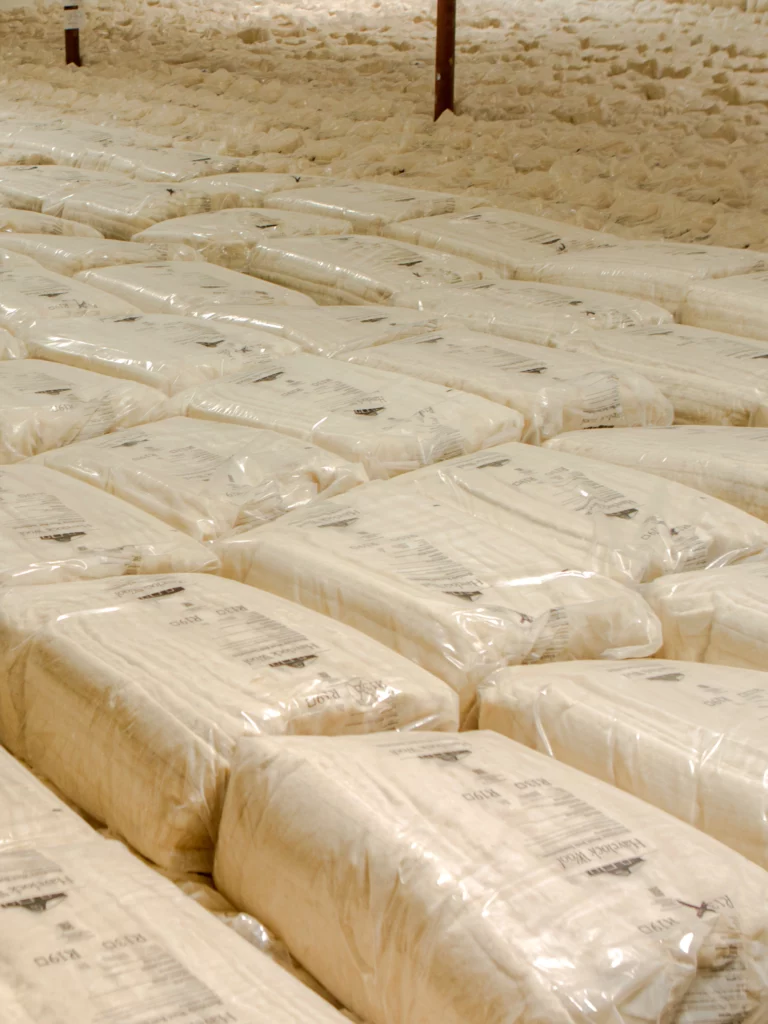Wool
Havelock
DE, GA, NV

Since it’s most naturally manufactured into panels, cork works perfectly as an exterior insulation / cladding. It breathes away moisture but doesn’t expand or contract much, and unless it’s hit or jostled, it won’t change shape. Sheep’s wool, on the other hand, expands over time, allowing it to fill wall cavities, rather than condensing over time like most other types of insulation. Engineered by Mother Nature to wick away moisture and keep sheep as warm as possible with as light a material as possible, wool is safe and clean on a chemical level and can be sustainably grown, harvested and processed. Harmless enough to be installed with bare hands, wool can be a bridge between the client and the construction process; a day of stuffing walls is the perfect activity for the whole family. And it’s a material that most people are already comforted by, having worn a wool sweater or slept under a wool blanket. Although sheep are raised on the East Coast, a wool insulation industry does not exist here. Canada has considered subsidizing a sheep’s wool insulation industry around Toronto, but no concrete steps have been taken in that direction. Havelock, a Nevada-based insulation company, makes gorgeous wool insulation, sheared from the happiest healthiest sheep in the world—in New Zealand. The global nature of American sheep’s wool insulation manufacturing is a downside, but it shouldn’t prevent American architects from using the product. Although more expensive than dirt-cheap fiberglass and cellulose, time will prove sheep’s wool insulation to be the most effective and durable insulation material readily available.